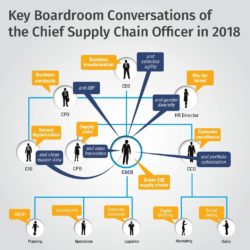“Automation needs a human touch to create real supply chain value”

While some dream of a fully automated business, the truth is that a blend of human and machine offers the greatest benefits and greater agility. Automating the supply chain can transform an organization’s future – but not in the way we may have first thought.
By IMD Professor of Strategy and Supply Chain Management Carlos Cordon
There are few factories around the world that do not have some form of automation today as management teams chase the possibilities of higher productivity. What they did not expect was that the biggest benefits have often been in quality. Automation can also help with sales and operations planning (S&OP) where there can be thousands of spreadsheets to fill with so many potential human mistakes.
Like the weather, it is easier to predict what is going to happen tomorrow than what will happen next week, but some thought that computers could see into future more clearly than the human eye. In fact, algorithms do not necessarily forecast the future much better than humans – but they are very good at correcting human bias which can make a big difference in efficiency and sustainability.
A vision or a hallucination?
In reality, the CFO’s vision of the fully automated supply chain, in which savings and productivity go through the roof, is probably more appropriately described as a hallucination. Indeed, some areas of the supply chain where it has been harder to replace humans include contract negotiation and certain parts of logistics which can be very ‘hands-on’ in nature.
But there is a more fundamental reason for not trying to convert everything to automation: a fully automated system reduces, rather than enhances, agility. Today, agility is crucial for organizations as circumstances change from week to week in a highly uncertain world. The rigidity of full automation would leave companies even more exposed to shocks.
If we want our supply chains to become more agile, while also reaping the optimum benefits from automation, we need a blended, non-rigid approach – part-human and part-robot. Here’s an example to show why this matters.
At the start of the pandemic, consumers were going crazy for detergent to keep their homes and offices clean. For an automated supply chain that makes estimates based on previous experience, this was incomprehensible at first. Enabling agility in the process by maintaining some human oversight allows for a quicker response to peaks and troughs in demand. The robots will figure it out eventually, of course, but not before there has been an adverse impact.
Four benefits of a blended approach
While there is no one ‘correct’ solution that companies can apply for getting the balance right between automated processes and human intervention, it seems clear that some form of blended approach will enable executives to reap the rewards of automation and increase agility while avoiding the pitfalls of relying too heavily on machines in turbulent times.
Here are four key benefits that companies should look to unlock by integrating automation into their supply chains:
Lower labour costs
Automation can reduce labour costs across the supply chain and eliminate time-consuming, error-prone tasks such as data input and forecasting for planning.
Greater agility
Finding the right blend between automation and human oversight can unlock greater potential for agility. Going too far with automated operations can create rigidity that is hard to overcome.
Higher quality
Automation can eliminate human error in manufacturing and other parts of the supply chain, triggering considerable improvements in quality.
Sustainable supply chains
An efficient, accurate supply chain is a more sustainable supply chain. There are a wide range of savings to be made, from waste and energy to transportation and materials.
Article from IMD.










